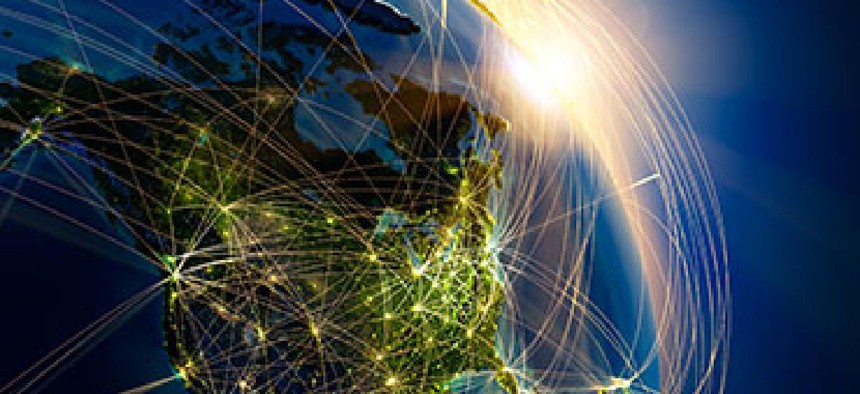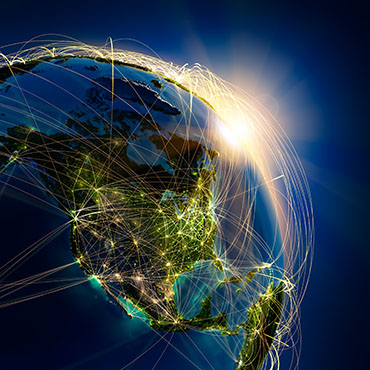NGA banks on the power of transparency

Agency director touts data shared to combat Ebola, says open approach "is our future."

There is a data explosion happening in government. According to National Geospatial-Intelligence Agency Director Robert Cardillo, geospatial data -- and in turn, his agency -- are on the cusp of it.
Cardillo, speaking on Feb. 10 at the ESRI Federal GIS conference in Washington, D.C., called it the democratization of geospatial information, and said there are two factors driving it.
"First, the geography of the Internet – and the emerging Internet of Things – are spreading rapidly as more people carry more handheld devices to more places," Cardillo said. "They depend on their geo-reference to work, so that makes what we do -- spatial-temporal analysis -- the bridge to the future of commerce, cooperation, transparency and security."
Second, he said, the rapidly increasing number of satellites in the sky will produce an even greater ramp-up in the amount of data that is readily available. Hundreds of small satellites launched by companies like SkyBox and PlanetLab will be collecting more and more data in the next few years, Cardillo said.
"The challenges of taking advantage of all that data is daunting, and exciting," he said. “It will be less about the images and more about the derived information, the context, the analytics and the consequences we can enable with that data.”
And NGA, whose traditional roles as a combat support agency and a member of the intelligence community long encouraged a closed-door approach to its data, in increasingly opting to open up its geospatial resources and put them to broader public use.
Since October, Cardillo said, NGA has been playing a behind-the-scenes role in the fight against Ebola, supporting aid efforts in Western Africa. An NGA analyst and members of the 101st Airborne Division have been working in Liberia, side by side with the Liberian Institute of Statistics and Geo-Information Services, helping the country with its geospatial data.
The team broke up the data by countries and into logical thematic groups, and then created country web maps. What resulted is an unclassified mapping application that allows relief agencies and other Ebola responders -- or anyone else inclined to visit www.NGA.mil and click on "Ebola Support" -- to access information on treatment centers, mobile phone coverage, power grids and more. Cardillo said his agency has shared nearly 500 data layers, 68 applications and 100 percent of NGA's elevation data for the region.
Moving forward, NGA is going to continue to embrace open data efforts and be transparent, Cardillo said. "This is new for us," he said, but this sort of open response by NGA to help address a public crisis "is our future."
The agency has joined with Digital Globe to release on GitHub an app called MapReduceGEO, which uses cloud-based architecture to solve geospatial problems. NGA is also working on a "Disconnected Interactive Content Explorer" app, which is “coming soon.” The DICE app will allow NGA to provide consistent access to GEOINT for consumers operating in disconnected environments, Cardillo said -- something especially useful for disaster response personnel, search and rescue teams and other parties that need interactive content but don’t always have Internet access.
Cardillo also said that roughly one fourth of all NGA's data was now publicly available online, and promised that there's more to come. The Ebola crisis, he said, "will not be the last time" NGA throws open the doors to critical data.
NEXT STORY: Using SIGINT to detect trends


